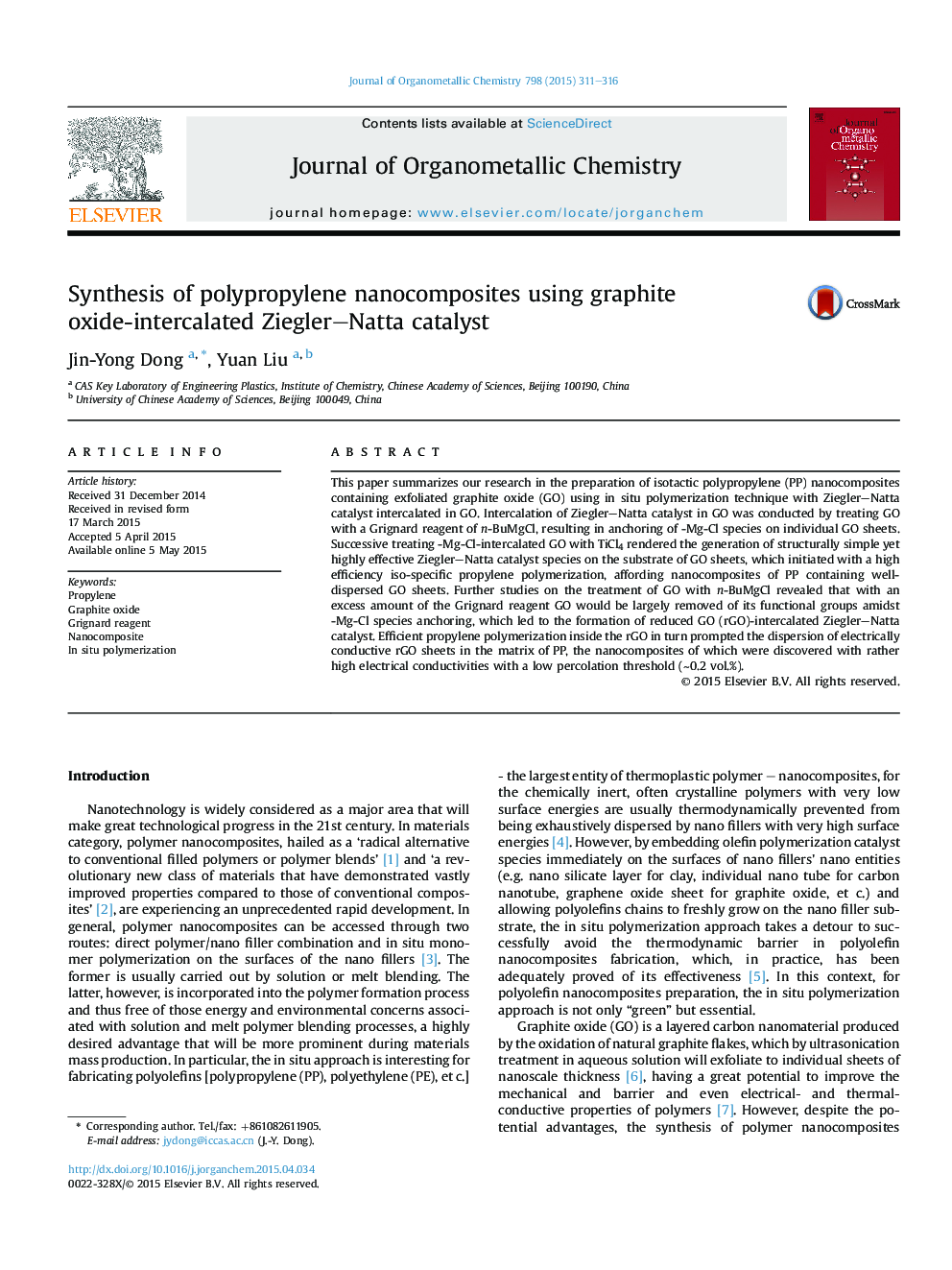| Article ID | Journal | Published Year | Pages | File Type |
|---|---|---|---|---|
| 1320660 | Journal of Organometallic Chemistry | 2015 | 6 Pages |
•Preparation of PP/exfoliated graphite oxide nanocomposites using in situ polymerization technique is summarized.•Intercalation of Ziegler–Natta catalyst into graphite oxide is accompanied by graphene oxide reduction.•Highly efficient propylene polymerization leads to PP/graphene oxide nanocompoistes with high electrical conductivity.
This paper summarizes our research in the preparation of isotactic polypropylene (PP) nanocomposites containing exfoliated graphite oxide (GO) using in situ polymerization technique with Ziegler–Natta catalyst intercalated in GO. Intercalation of Ziegler–Natta catalyst in GO was conducted by treating GO with a Grignard reagent of n-BuMgCl, resulting in anchoring of -Mg-Cl species on individual GO sheets. Successive treating -Mg-Cl-intercalated GO with TiCl4 rendered the generation of structurally simple yet highly effective Ziegler–Natta catalyst species on the substrate of GO sheets, which initiated with a high efficiency iso-specific propylene polymerization, affording nanocomposites of PP containing well-dispersed GO sheets. Further studies on the treatment of GO with n-BuMgCl revealed that with an excess amount of the Grignard reagent GO would be largely removed of its functional groups amidst -Mg-Cl species anchoring, which led to the formation of reduced GO (rGO)-intercalated Ziegler–Natta catalyst. Efficient propylene polymerization inside the rGO in turn prompted the dispersion of electrically conductive rGO sheets in the matrix of PP, the nanocomposites of which were discovered with rather high electrical conductivities with a low percolation threshold (∼0.2 vol.%).
Graphical abstractPP/exfoliated graphite oxide nanocomposites were prepared by in situ polymerization technique. A pre-treatment of graphite oxide with n-BuMgCl resulted in reduction of graphene oxide, which eventually led to the formation of PP/graphene oxide nanocompoistes with high electrical conductivity.Figure optionsDownload full-size imageDownload as PowerPoint slide
